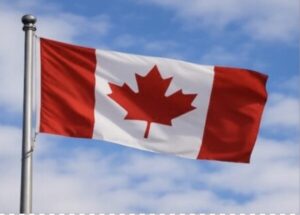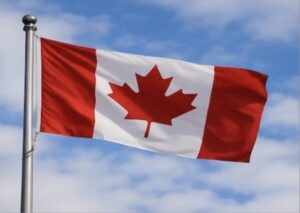Understanding the Open Work Permit with Spousal Sponsorship Inland Canada
Immigration can be overwhelming, especially for couples building a life together in Canada. For those already living in Canada, the Open Work Permit (OWP) through Inland Spousal Sponsorship offers a practical solution. It provides legal status while awaiting permanent residency (PR) approval and allows the foreign spouse or partner to work in Canada without employer restrictions.
It enables couples to live, work, and thrive together during the immigration process, rather than facing separation or uncertainty. The OWP under inland sponsorship is a lifeline for many couples working toward their PR goals.
In this article, we’ll cover everything you need to know about Inland Spousal Sponsorship and the OWP option, including eligibility, documentation, timelines, and more. Whether you’re just starting your immigration journey or are already in the process, this guide will help you move forward confidently.
What is Inland Spousal Sponsorship?
Inland spousal sponsorship is a Canadian immigration process that allows a Canadian citizen or permanent resident to sponsor their spouse or common-law partner who is already living inside Canada. This is a popular route for couples who are already cohabitating in Canada and want to take the next step toward permanent residency—without having to leave the country.
Key Features:
- The sponsored person must be living in Canada at the time of application.
- The couple must prove the genuineness of their relationship, whether through marriage or common-law partnership.
- The applicant may be eligible for an Open Work Permit, allowing them to legally work while waiting for their PR decision.
One important distinction to make is the difference between inland and outland sponsorship. Inland is for those already in Canada; outland is generally for spouses living abroad or for those who want the flexibility to travel during the process.
Pros of Inland Sponsorship:
- Stay together in Canada throughout the process
- Potential eligibility for OWP
- Avoid the stress of long-distance separation
Cons:
- Travel outside of Canada may be risky or limited
- Must maintain valid temporary status in Canada until PR is granted (e.g., as a visitor, student, or worker)
So, if you’re already in Canada with your partner and want to settle here permanently, inland spousal sponsorship could be the best option for you.
Understanding the Open Work Permit (OWP)
Let’s talk about the key component of this process—the Open Work Permit. Simply put, an open work permit allows a foreign national to work for any employer in Canada without needing a job offer or a Labour Market Impact Assessment (LMIA). It’s a flexible and empowering tool, especially when you’re in the middle of an immigration application.
When paired with an inland spousal sponsorship, the OWP acts as a bridge. While you’re waiting—often several months—for your PR to be processed, the OWP lets you legally earn a living and contribute to your household.
Benefits of OWP:
- Freedom to work for any employer in any province
- No LMIA required, making it easier to get employed
- Helps reduce financial strain on the sponsor
- Supports integration into Canadian society and the workforce
This type of permit is only available to applicants who have submitted a complete inland sponsorship application, which includes both the sponsorship and permanent residence parts.
Who is Eligible to Apply?
Eligibility is everything in immigration. For the OWP + Inland Sponsorship route, both the sponsor and applicant must meet specific criteria.
Sponsor Requirements:
- Must be a Canadian citizen or permanent resident
- At least 18 years old
- Must not be in prison, bankrupt, or charged with serious criminal offenses
- Able to prove financial ability to support the spouse/partner (though income minimums are not required for spousal sponsorship)
Applicant (Sponsored Person) Requirements:
- Must be physically present in Canada
- Must be in a genuine relationship with the sponsor (married or common-law)
- Should have valid temporary status in Canada (e.g., visitor, student, worker) at the time of application
- Should not be inadmissible for reasons like criminal history or medical issues
Additional Notes:
- Even if your status has expired, you might still apply under restoration of status within 90 days
- In some special circumstances, individuals without status may still be able to apply—for example, the public policy under A25(1) of the Immigration and Refugee Protection Act (IRPA) allows a person without status to apply for spousal sponsorship.
However, these options carry certain risks and should be carefully considered with the guidance of a qualified legal professional.
Documents Required for OWP and Inland Sponsorship
When applying for both an inland spousal sponsorship and an open work permit (OWP), having the right documents is not just a necessity—it’s the foundation of a successful application. The Canadian immigration system demands thoroughness, and any missing or incorrect document can delay or even derail your case.
Let’s break down the documentation needed for each component.
1. Inland Sponsorship Application Documents
This part of the application focuses on proving the relationship between the sponsor and the applicant and confirming the sponsor’s eligibility.
For the Sponsor:
- Proof of Canadian citizenship or permanent residence (e.g., PR card, Canadian passport, birth certificate)
- Relationship documents (marriage certificate, common-law declarations, joint lease agreements, shared utility bills)
- IMM 1344 – Application to Sponsor
- IMM 5532 – Relationship Information and Sponsorship Evaluation
- Police certificates (if required)
- Digital photo meeting IRCC specifications
For the Applicant:
- IMM 0008 – Generic Application Form for Canada
- IMM 5669 – Schedule A: Background/Declaration
- IMM 5406 – Additional Family Information
- Passport copies (including pages with stamps and visas)
- Immigration medical exam confirmation
- Police clearance certificates from countries where the applicant has lived for 6 months or more
2. Open Work Permit (OWP) Documents
This is the second part of the combined process, often submitted simultaneously with the sponsorship application or shortly afterward.
- IMM 5710 – Application to Change Conditions, Extend Stay or Remain in Canada as a Worker
- Fee payment receipt (for the $255 OWP processing fee)
- Passport (full copy)
- Two passport-sized photos
- Proof of submission of PR application (receipt or Acknowledgement of Receipt if submitted earlier)
- Explanation letter (optional but recommended, outlining your request for an OWP under inland sponsorship)
Tips for Success:
- Double-check that all documents are signed and dated.
- If documents are not in English or French, provide certified translations.
- Organize your documents in the correct order as per IRCC guidelines.
Having all of this documentation prepped and polished not only shows IRCC that you’re serious but also speeds up processing. Remember, an incomplete application will be returned, wasting precious time and possibly affecting your legal status in Canada.
How to Apply for an OWP with Inland Spousal Sponsorship
Applying for an OWP with inland sponsorship isn’t overly complicated, but it does require attention to detail and careful timing. The good news is, you can apply for both simultaneously or submit the OWP shortly after filing your sponsorship package.
Step-by-Step Process
Step 1: Gather Your Documents
Start by collecting all necessary documents for both the inland sponsorship and the OWP application. Use the checklist provided by IRCC to make sure you don’t miss anything.
Step 2: Complete the Required Forms
The main forms include:
- IMM 1344 and IMM 5532 for the sponsorship application
- IMM 0008, IMM 5669, IMM5562 and IMM 5406 for PR application
- IMM 5710 for the OWP application
Make sure to validate and sign all forms electronically before printing them for submission.
Step 3: Pay the Required Fees
You’ll need to pay:
- Sponsorship fee: $85
- Principal applicant processing fee: $545
- Right of permanent residence fee (RPRF): $575
- OWP fee: $255
Payments are made online via the IRCC website, and you’ll receive a receipt to include in your package.
Step 4: Submit Your Application
The application can be mailed in a single envelope to the appropriate address. However, paper applications are only accepted under specific circumstances—such as when the applicant has a disability or is submitting the application using certain travel documents.
Make sure to:
- Clearly label the documents
- Include a cover letter explaining the combined application (optional but helpful)
- Keep a copy of everything for your own records
Step 5: Wait for Acknowledgment of Receipt (AOR)
Once your application is received, IRCC will send an Acknowledgment of Receipt (AOR). This means your file is in the system, and the OWP can now be processed.
Online Submissions
IRCC now allows certain applications to be submitted online. If you choose this route, ensure all documents are scanned and uploaded correctly. Digital signatures and document formats must comply with IRCC requirements.
Processing Time and What to Expect
Processing times for inland sponsorship and the accompanying open work permit can be unpredictable, but let’s break down what you can generally expect in 2024–2025.
Inland Spousal Sponsorship
- Average processing time: 12 months
- This timeline includes background checks, relationship verification, and decision-making
- IRCC may contact you for additional documents or interviews
Open Work Permit (OWP)
- Average processing time: 3 to 6 months
Many applicants receive the OWP before PR is finalized, usually after receiving sponsor eligibility approval
What to Expect While Waiting
- Once you submit your inland sponsorship, you’ll receive an Acknowledgment of Receipt (AOR) within 2–3 months
- After AOR, if your sponsor is approved, your OWP application starts getting processed
- Once OWP is approved, you’ll receive a work permit card by mail
- You can start working immediately once you receive it
Implied Status
If your temporary status in Canada expires while you are waiting for the OWP and you applied before it expired, you may have implied status. This means you can stay in Canada and continue working (if you already had a work permit) until you receive a decision.
Planning and patience are key here. Make sure you apply early and keep copies of everything, including proof of Submission
Common Challenges and Mistakes to Avoid
To avoid this issue, make sure to apply for the OWP as soon as you receive your Acknowledgment of Receipt (AOR) from IRCC for your permanent residence application.While the inland sponsorship and OWP process is designed to help families stay together, it’s not without its pitfalls. Every year, thousands of applications are delayed or denied due to avoidable mistakes.
Here are the most common issues and how to avoid them:
1. Incomplete or Incorrect Applications
One of the top reasons applications are returned is because forms are:
- Not signed or validated
- Missing documents
- Using outdated versions
Fix: Use IRCC’s official document checklist and double-check every detail before submission. Consider having someone else review your package before sending it.
2. Misunderstanding Eligibility
Many applicants assume they qualify when they don’t. For instance, the sponsored person must be physically present in Canada to apply inland. Others may wrongly believe they qualify for an OWP even if their sponsorship hasn’t been submitted.
Fix: Research thoroughly or consult a legal expert to confirm you meet every eligibility requirement.
3. Poor Proof of Relationship
Sponsorship applications hinge on proving your relationship is real and not for immigration purposes. Weak evidence can lead to delays, or worse, a refusal.
Fix: Include robust evidence such as:
- Photos across various stages of your relationship
- Communication logs
- Joint leases, bank accounts, bills
- Letters of support from family and friends
4. Letting Status Expire
Failing to renew your status or apply in time can lead to falling out of legal status, complicating your situation.
Fix: Always track your permit’s expiry and apply early for extensions or restoration if needed.
5. Delaying the OWP Application
One common mistake is waiting too long to apply for the Open Work Permit (OWP) after submitting the inland spousal sponsorship application. Some applicants either forget or delay this crucial step, resulting in unnecessary months of waiting where they cannot legally work in Canada.
Fix: To avoid this issue under spousal sponsorship, make sure to apply for the Open Work Permit (OWP) as soon as you receive your Acknowledgment of Receipt (AOR) from IRCC for your permanent residence application.
However, you may apply for a work permit without an AOR if both of the following conditions are met:
- Your work permit, study permit, or temporary resident status will expire in 2 weeks or less, and
- You have already submitted your application for permanent residence under the spousal sponsorship program.
A successful application depends on accuracy, timing, and completeness. Avoiding these common pitfalls will save you months of stress and keep your future plans on track.
What Happens After OWP is Approved?
Getting your Open Work Permit (OWP) approved under inland spousal sponsorship is a major milestone—but it’s not the end of the road. What comes next? You transition into a new phase of your immigration journey where you can legally work in Canada while awaiting the final decision on your permanent residence (PR).
1. Your Rights as a Work Permit Holder
Once approved, your OWP grants you:
- The ability to work for any employer in Canada
- No need for LMIA or a specific job offer
- The freedom to change jobs or employers at any time
- The right to move between provinces (as long as you and your sponsor remain cohabiting and eligible)
This flexibility empowers you to build your life, establish a career, and contribute financially to your household while your PR application is being reviewed.
2. Social Insurance Number (SIN)
With your OWP in hand, head to a Service Canada office or apply online for a SIN number. This is essential to begin working and accessing services like taxes, employment insurance, and benefits.
3. Health Coverage Eligibility
Some provinces, like Ontario, Alberta, and British Columbia, allow OWP holders to apply for public health coverage. Be sure to check your province’s requirements and apply as soon as you receive your permit.
4. Waiting for PR Decision
You still need to complete the full PR process, which may include:
- Biometrics (if not already done)
- Medical exams
- Additional documentation
- Possible interviews
Processing typically continues in the background while you enjoy the benefits of your OWP.
5. Renewing the OWP (If Necessary)
If your PR application is still in process and your OWP is close to expiry, you can apply for a renewal. Ensure this is done well before expiry to maintain your ability to work without interruption.
While waiting for PR, the OWP gives you a sense of normalcy and a chance to integrate into Canadian life, which is the goal for most applicants.
Legal and Immigration Help – When to Get a Consultant
While it’s entirely possible to handle the inland sponsorship and OWP process on your own, many applicants choose to consult with an immigration professional. When does it make sense to do so?
When You Should Consider Hiring Help:
- You or your partner have a complicated immigration history
- One of you is out of status or on the verge of losing status
- You’re unsure about which documents to include
- English or French is not your first language, and you’re struggling with forms
- You’ve had a previous application refused
Immigration consultants (RCICs) and lawyers are licensed professionals who can:
- Help you complete forms accurately
- Organize your proof of relationship
- Submit applications and follow up with IRCC on your behalf
- Guide you through status restoration or appeal processes
What to Watch Out For:
- Unauthorized agents or “ghost consultants”
- Overpromising or guaranteeing approvals (nobody can)
- Excessive fees or lack of transparency
Always check that your consultant is licensed with the College of Immigration and Citizenship Consultants (CICC) or the provincial law society.
Hiring a pro can bring peace of mind—especially when your future in Canada is on the line.
Conclusion
Applying for an Open Work Permit with Inland Spousal Sponsorship in Canada isn’t just paperwork—it’s a powerful step toward building a life together with the one you love. It keeps families united, gives sponsored partners the ability to work and contribute, and makes waiting for permanent residency far more bearable.
From maintaining your status and organizing your documents to avoiding common mistakes and understanding timelines, every step counts. And while it can feel overwhelming, the combination of love, legal eligibility, and proper preparation is a formula for success.
FAQs
1. Can I travel while on inland sponsorship and OWP?
It’s risky. Inland applicants are expected to stay in Canada. Leaving could jeopardize your application or result in being denied re-entry.
2. How long does the OWP take to get approved?
Typically, 4–6 months. It depends on IRCC processing times and whether your application was complete.
3. Do I need to maintain status before applying?
Yes, you must have valid temporary status when you apply for inland sponsorship. If not, restoration of status may be required.
4. Is OWP automatic with sponsorship?
No. You must apply for it separately, even if you’re eligible. It is not granted automatically with PR sponsorship.
5. What if the relationship ends during the process?
If your relationship ends before PR is approved, you must notify IRCC. Your application could be withdrawn or denied based on updated information.








